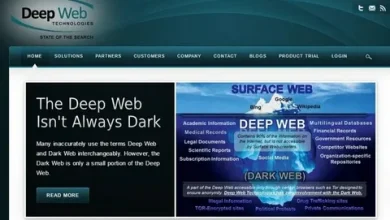Crafting an Effective IT Strategy for Small Businesses

In today’s digital age, information technology (IT) is the backbone of small businesses. An effective IT strategy can drive growth, enhance efficiency, and provide a competitive edge. This comprehensive guide will explore the importance of developing a well-rounded IT strategy for small businesses and offer insights into creating one that aligns with your goals.
For expert guidance in crafting a custom IT strategy for your small business, consider reaching out to Web Info Tech Ltd. Their expertise in IT strategy and technology solutions can help you optimize your business operations and seize new opportunities in the digital age. Contact them today to start your journey towards IT excellence and small business success.
The Significance of IT Strategy for Small Businesses
IT in the Modern Business Landscape
- The central role of IT in small business operations.
- How IT strategy can influence overall success.
Competing in a Digital World
- How small businesses can use IT to compete with larger corporations.
- Leveraging technology to stand out in the market.
Assessing Current IT Infrastructure
Technology Inventory
- Conducting an inventory of your current IT assets.
- The benefits of understanding your existing technology.
Identifying Pain Points
- Recognizing areas where IT can improve business processes.
- Listening to feedback from employees and customers.
Setting Clear Business Objectives
Defining Business Goals
- Aligning IT strategy with the broader business objectives.
- Setting clear, measurable goals for your IT efforts.
Long-term Vision
- Crafting a vision for your business’s future IT needs.
- Preparing for growth and scalability.
Budgeting and Resource Allocation
IT Budgeting
- The role of budgeting in IT strategy.
- Ensuring cost-effective solutions without sacrificing quality.
Resource Allocation
- Allocating human resources and time effectively.
- Leveraging external experts when necessary.
Security and Data Protection
Cybersecurity
- The importance of cybersecurity in safeguarding sensitive data.
- Developing a cybersecurity strategy to protect against threats.
Data Backup and Recovery
- Strategies for regular data backup and recovery planning.
- Avoiding data loss in the event of system failures.
Technology Infrastructure and Scalability
Infrastructure Investment
- Upgrading hardware and software to meet evolving needs.
- Achieving a balance between investing and overextending.
Scalability
- Ensuring that your IT systems can grow with your business.
- Avoiding bottlenecks and limitations as your business expands.
Cloud Solutions and Mobility
Cloud Computing
- Leveraging cloud solutions to streamline IT operations.
- Reducing costs and improving accessibility.
Mobile Workforce
- Enabling remote work and mobile operations.
- Adapting to the changing landscape of work.
IT Team Building
In-house vs. Outsourcing
- Deciding whether to build an in-house IT team or outsource.
- Weighing the pros and cons of each approach.
Skill Development
- Supporting your IT team’s professional growth.
- The importance of continuous training.
Compliance and Regulations
Legal Compliance
- Understanding legal and regulatory requirements in your industry.
- Ensuring IT practices adhere to these standards.
Data Privacy
- Protecting customer data and privacy.
- Building trust by maintaining strict data protection measures.
Regular Evaluation and Adaptation
Continuous Improvement
- The significance of regular evaluation and adaptation.
- Learning from past experiences and optimizing IT strategy.
Staying Informed
- Remaining updated on the latest IT trends and developments.
- Seizing opportunities for innovation.
Embracing Digital Transformation
Embracing Digitalization
- The role of digital transformation in IT strategy.
- Leveraging new technologies to streamline operations.
Data Analytics
- Harnessing data analytics for business insights.
- Making informed decisions based on data.
Disaster Recovery and Business Continuity
Disaster Recovery Planning
- Preparing for unexpected disasters that can impact IT.
- Developing a comprehensive disaster recovery plan.
Business Continuity
- Ensuring business operations continue in the face of adversity.
- Mitigating downtime and financial losses.
The Role of Customer Experience
Customer-Centric Approach
- How IT can enhance the customer experience.
- Meeting customer expectations in a digital world.
User-Friendly Interfaces
- Designing user-friendly interfaces and digital touchpoints.
- Creating an intuitive online experience for customers.
Measuring IT Strategy Success
Key Performance Indicators (KPIs)
- Defining KPIs to measure the success of your IT strategy.
- Monitoring progress and making data-driven decisions.
Continuous Optimization
- Strategies for optimizing your IT strategy as your business evolves.
- Staying adaptable and responsive to changing needs.
IT Strategy and Marketing
Digital Marketing Integration
- The synergy between IT strategy and digital marketing.
- Leveraging technology for marketing campaigns.
Data-Driven Marketing
- Using data analytics for targeted marketing efforts.
- Enhancing marketing ROI through IT strategy.
IT Strategy and Employee Productivity
Employee Empowerment
- How IT can empower employees to be more productive.
- Providing tools and systems that enhance work efficiency.
Remote Work Solutions
- Facilitating remote work and increasing workforce flexibility.
- Ensuring your IT strategy supports the changing work environment.
Future-Proofing Your IT Strategy
Staying Ahead of Technology Trends
- Preparing your business for emerging technologies.
- Anticipating future IT needs.
Industry-Specific IT Solutions
- Tailoring your IT strategy to the specific needs of your industry.
- Recognizing unique challenges and opportunities.
Final Thought
Developing and implementing a comprehensive IT strategy for your small business is not just a necessity in today’s digital world, but also a powerful catalyst for growth and success. As you navigate the complexities of technology, cybersecurity, and data management, remember that your strategy should be flexible and adaptable. IT is not a one-time effort; it’s a continuous journey of improvement and innovation.




